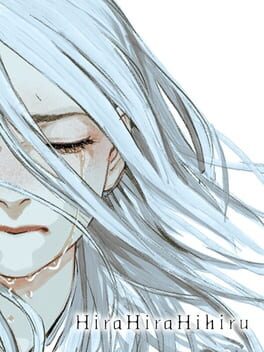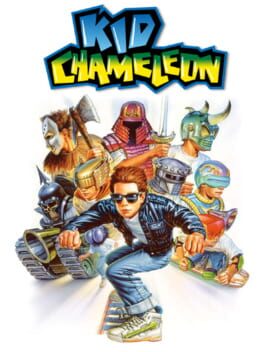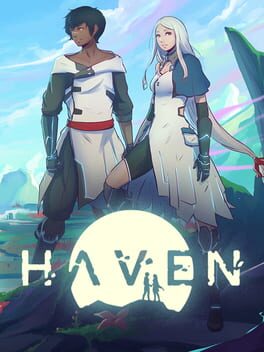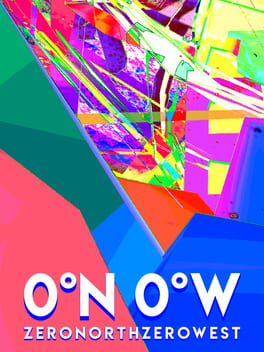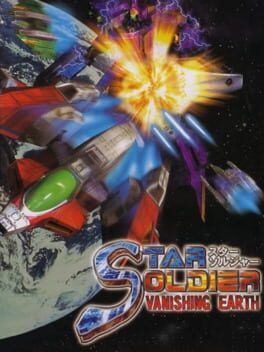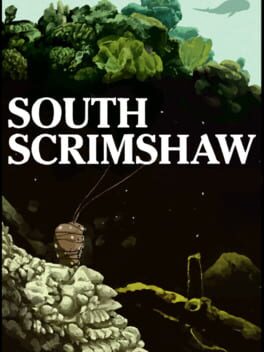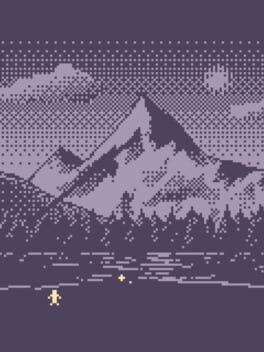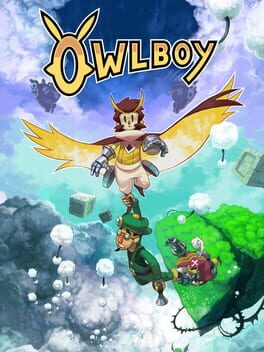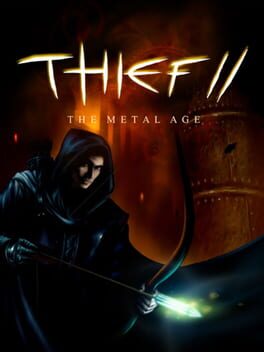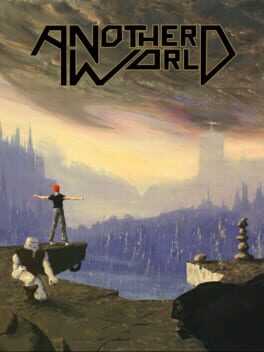2020
Good voice acting, good characters, good story. I also didn't mind the fact that choices didn't really make any difference in terms of how things went: what I liked was the chance to see what the character felt, through those choices. In a way, it is something that only this medium can do through some simple game design ideas. What I didn't like though was the ending.
One aspect that the game explored well in the first two and a half hours was the relationship between power, toxic masculinity, and how these two elements ultimately shape the mind and behaviors of an individual. They determine to what extent one can prioritize oneself over others. The historical context of the Cold War is excellent, and the inclusion of a discourse on women's rights is highly fitting in addressing the theme of power.
Unfortunately, for reasons I'm not quite sure of, the decision is made to undermine the connection between choices, attitudes, power, culture, and social relationships by revealing that the protagonist lies to himself even within his own memories, trying to remember his past under a different light (maybe a better one). Apparently, what is said and done never corresponds to the truth. Yet, this is something that has no impact on the entire game, is not significant for any of the themes explored, and I absolutely do not understand the significance of this kind of unreliabilty. In the last half hour of the game (quite a significant slice, considering the game is barely three hours long, and very short at the same time since it develops suddenly and too fast), the focus shifts completely, destroying everything that was being built up to that point. I can't help but think that perhaps the protagonist behaved, throughout the many events in which we were involved, modeling himself after his father or something like that; unfortunately, even if that were the case, the execution is horribly superficial. And it's a shame, especially considering that there are some moments where the transitions are truly impactful in revealing the character's past: in my opinion, they could have been the real strength of the entire game and yet they were not explored enough
One aspect that the game explored well in the first two and a half hours was the relationship between power, toxic masculinity, and how these two elements ultimately shape the mind and behaviors of an individual. They determine to what extent one can prioritize oneself over others. The historical context of the Cold War is excellent, and the inclusion of a discourse on women's rights is highly fitting in addressing the theme of power.
Unfortunately, for reasons I'm not quite sure of, the decision is made to undermine the connection between choices, attitudes, power, culture, and social relationships by revealing that the protagonist lies to himself even within his own memories, trying to remember his past under a different light (maybe a better one). Apparently, what is said and done never corresponds to the truth. Yet, this is something that has no impact on the entire game, is not significant for any of the themes explored, and I absolutely do not understand the significance of this kind of unreliabilty. In the last half hour of the game (quite a significant slice, considering the game is barely three hours long, and very short at the same time since it develops suddenly and too fast), the focus shifts completely, destroying everything that was being built up to that point. I can't help but think that perhaps the protagonist behaved, throughout the many events in which we were involved, modeling himself after his father or something like that; unfortunately, even if that were the case, the execution is horribly superficial. And it's a shame, especially considering that there are some moments where the transitions are truly impactful in revealing the character's past: in my opinion, they could have been the real strength of the entire game and yet they were not explored enough
2023
I'll begin by stating that the writing is really dense. The main theme and story aim to represent how psychiatric disorders are perceived and experienced by the unaffected population. The hihiru's illness quickly turns them into repellent subjects: their internal and external organs, including sensory ones, decompose year after year; their intellectual faculties suffer, the nervous system itself is affected and deteriorates over time, and they gradually experience more visual and auditory hallucinations, leading to exacerbating certain violent behaviors and moments of crisis. In this case, there is a parallel with the Japanese (and, to be honest, global) story when it comes to the treatment of psychiatric subjects: they are discriminated against, isolated, and often their families confine them in specially built cages within their homes (on this topic, you can read a paper by Yumi Kim from 2018).
The story is experienced through the perspective of a few characters: a practicing doctor within a facility that takes care of these subjects, trying to give them a dignified life and necessary treatments, and a student dealing with unexpected situations involving hihiru.
The hihiru are, in fact, a representation of what one would not want to see or deal with. Besides being useful for reflecting on the perception of illnesses (the visual novel also incorporates mysticism and folklore, which the protagonists try to combat through both scientific and compassionate/welcoming approaches), they can also be seen as a representation of all the disadvantaged classes within a broader social fabric: they are routinely exploited in the prostitution market, have no access to proper care (this is also true for members of wealthier families who reject modern medicine), and are perceived as something untreatable. In the scientific world itself, in that Japanese context, there is controversy when it comes to the possibility of treating symptoms and disorders related to immunology, and there is a pessimistic perception of attempting to classify something that does not have a precise definition.
Amidst all this, the sections intertwining the various themes associated with hihiru and the development and presence of the protagonists almost always proceed at an excellent pace: events give the right breathing space to each character and the consequences of almost all actions taken (with a couple of paradoxical exceptions where there is an intention to rush too quickly), thus managing to convey a good sense of realism.
Unfortunately, there are also some chapters filled with mundane situations, certainly useful for delving into the lives and personalities of the protagonists but, in my opinion, are insisted upon too much. In these cases, I had the perception that the rhythm not only slowed down but came to a complete halt. Additionally, while the overall voice acting is very good, the protagonists' voice acting often seems conducted in a very superficial manner; I'm far from being an expert in Japanese dubbing, but many times I noticed very flat and too similar tones in very different situations, even in intense or tragic moments.
The choices that can be made are few, but some of them are very significant; from a narrative point of view, they allow triggering sequences that would otherwise be inaccessible. I gather there are a total of 4 endings
The story is experienced through the perspective of a few characters: a practicing doctor within a facility that takes care of these subjects, trying to give them a dignified life and necessary treatments, and a student dealing with unexpected situations involving hihiru.
The hihiru are, in fact, a representation of what one would not want to see or deal with. Besides being useful for reflecting on the perception of illnesses (the visual novel also incorporates mysticism and folklore, which the protagonists try to combat through both scientific and compassionate/welcoming approaches), they can also be seen as a representation of all the disadvantaged classes within a broader social fabric: they are routinely exploited in the prostitution market, have no access to proper care (this is also true for members of wealthier families who reject modern medicine), and are perceived as something untreatable. In the scientific world itself, in that Japanese context, there is controversy when it comes to the possibility of treating symptoms and disorders related to immunology, and there is a pessimistic perception of attempting to classify something that does not have a precise definition.
Amidst all this, the sections intertwining the various themes associated with hihiru and the development and presence of the protagonists almost always proceed at an excellent pace: events give the right breathing space to each character and the consequences of almost all actions taken (with a couple of paradoxical exceptions where there is an intention to rush too quickly), thus managing to convey a good sense of realism.
Unfortunately, there are also some chapters filled with mundane situations, certainly useful for delving into the lives and personalities of the protagonists but, in my opinion, are insisted upon too much. In these cases, I had the perception that the rhythm not only slowed down but came to a complete halt. Additionally, while the overall voice acting is very good, the protagonists' voice acting often seems conducted in a very superficial manner; I'm far from being an expert in Japanese dubbing, but many times I noticed very flat and too similar tones in very different situations, even in intense or tragic moments.
The choices that can be made are few, but some of them are very significant; from a narrative point of view, they allow triggering sequences that would otherwise be inaccessible. I gather there are a total of 4 endings
1992
2020
La scrittura dei due personaggi è buona e trovo comprensibile la semplicità complessiva del lavoro. Tuttavia, la ridotta grandezza delle isole (inoltre, pressoché identiche), la bassa varietà di risorse e creature, la bassa libertà di movimento rispetto a quanto vorrebbe portare il concept, lo rendono ai miei occhi abbastanza mediocre.
2018
A classic game that can be accused of pretentiousness, and I don't blame people who might do so. However, I find it to be a good experiment in giving shape to escapism in its representation between the virtual and the alien.
Like more conventional exploration-based games (or walking sims, if you prefer), this one has no inventory and no NPCs to interact with. Furthermore, it doesn't have real objectives that don't self-exhaust in exploration itself. The only thing to do is to progress through a series of enormous rooms that convey a sense of the alien, find a door, and cross it to reach the next room/world. I had the distinct feeling of being on alien worlds inhabited by other forms of life (due to some urban-like scenarios and some audio cues), but it's not important, and the game doesn't aim for interpretative commitment, as these are true dreamlike scenes (a mix of memories or information) to traverse and take refuge from the boredom and noise of everyday life
Like more conventional exploration-based games (or walking sims, if you prefer), this one has no inventory and no NPCs to interact with. Furthermore, it doesn't have real objectives that don't self-exhaust in exploration itself. The only thing to do is to progress through a series of enormous rooms that convey a sense of the alien, find a door, and cross it to reach the next room/world. I had the distinct feeling of being on alien worlds inhabited by other forms of life (due to some urban-like scenarios and some audio cues), but it's not important, and the game doesn't aim for interpretative commitment, as these are true dreamlike scenes (a mix of memories or information) to traverse and take refuge from the boredom and noise of everyday life
it's a fairly laid-back shoot 'em up, there aren't many bullets on the screen. The size of the hitbox seems a bit excessive to me; however, there's the ability to reflect bullets about to hit your ship, with a very short cooldown (approximately 1-2 seconds). Using a controller makes the game very suitable for beginners, and for the more skilled players it becomes a shoot 'em up to relax with.
During boss fights, the quantity of bullets on the screen increases drastically. The third boss annoys me a lot with its tendency to traverse the perimeter of the screen. On the contrary, I enjoyed the other ones; the last boss, Duoss Core Complete, is the one I have a platonic love for.
The three available ships, to choose from at the beginning of the game, differ significantly in firepower, special attack, and speed. They can be interpreted, in my opinion, as an easy, normal, and hard mode. The green one is very slow, and its firepower is kind of on the lower side, making it not a good combination. I would call it the hard mode of the game, but in an annoying way. The blue one is perhaps too powerful, especially because the time window available to reflect incoming bullets is very long. It's effectively an easy mode, thanks to its special attack that can almost immediately eliminate any boss.
During boss fights, the quantity of bullets on the screen increases drastically. The third boss annoys me a lot with its tendency to traverse the perimeter of the screen. On the contrary, I enjoyed the other ones; the last boss, Duoss Core Complete, is the one I have a platonic love for.
The three available ships, to choose from at the beginning of the game, differ significantly in firepower, special attack, and speed. They can be interpreted, in my opinion, as an easy, normal, and hard mode. The green one is very slow, and its firepower is kind of on the lower side, making it not a good combination. I would call it the hard mode of the game, but in an annoying way. The blue one is perhaps too powerful, especially because the time window available to reflect incoming bullets is very long. It's effectively an easy mode, thanks to its special attack that can almost immediately eliminate any boss.
2023
Bellissima idea di utilizzare il formato della kinetic novel per realizzare un falso documentario piuttosto elaborato su una specie animale fittizia. Così come accade normalmente in qualsiasi kinetic novel non ci sono route e non è possibile interagire con nessun elemento durante la visione: si tratta a tutti gli effetti di una fiction interattiva che, di interattivo, ha la sola possibilità di ricercare alcuni, sparuti approfondimenti riguardo alcune delle cose dette. Si tratta soltanto dell'introduzione al prodotto finale, di cui ancora non si conosce la futura data d'uscita
2021
Il gameplay, notevolmente scarno, è del tutto sacrificato alla narrazione e alla veste grafica del gioco (che su stessa ammissione degli sviluppatori trae ispirazione dalle tavole di Trondheim - per certe isole e fondali in esterno in particolare, Hergé, Mœbius - per le sezioni oniriche, e dei Kerascoët - per l'uso dei colori e per il design dei personaggi). Il platforming è ridotto all'osso e banalizzato anche dall'uso dello stesso cue visivo (della sbroda) per ogni piattaforma su cui ci si può arrampicare, l'esplorazione è inesistente dato che ogni mappa è estremamente lineare e il giocatore non viene gratificato con la scoperta di qualcosa di nuovo o anche solo parzialmente nascosto. Non sarebbe assolutamente un problema, se la narrazione valesse l'intera esperienza. Così non è, penso. La storia è comunque interessante, trattando un breve racconto a tema fantastico in cui molta attenzione è dedicata alla biografia della protagonista (in ogni sezione è possibile collezionare dozzine di ricordi legati a un particolare ambiente o un particolare oggetto) e alle sue relazioni con gli altri personaggi presenti (sue amicizie e suoi parenti). Purtroppo, le potenzialità del medium non sono quasi mai sfruttate dagli sviluppatori: l'unica occasione colta è quella di accedere a determinati ricordi e di ricostruire individualmente la biografia della protagonista. Allo stesso tempo, questi stessi ricordi sono tutti facilmente accessibili e quasi nessuno di essi è realizzato in maniera tale da rendere ogni possibile ricostruzione differente da quella di un'altra persona: anche qui, la scoperta non è gratifacata né presente, e l'esperienza dei giocatori e tra giocatori sarà sempre identica. banalmente, il racconto così presentato sarebbe forse risultato più interessante sotto forma di fumetto o cortometraggio animato.
In più, quelle fonti luminose da evitare per far sì che i pochi e monotoni puzzle presenti non vengano resettati sono più o meno come le occasioni di platforming in Doom al di fuori delle battaglie: inutili rotture di cazzo elementari che non aggiungono nulla all'esperienza di gioco.
In più, quelle fonti luminose da evitare per far sì che i pochi e monotoni puzzle presenti non vengano resettati sono più o meno come le occasioni di platforming in Doom al di fuori delle battaglie: inutili rotture di cazzo elementari che non aggiungono nulla all'esperienza di gioco.
A first approach to what itch.io now identifies as 'bitsy games,' very simple and very short games created with the free bitsy software, which indeed gives its name to this video-game wave.
On itch.io and other platforms, these games are also often referred to as Interactive Fiction. From what I understand, to get a clearer idea, the actual genre should often better fit into narrative adventure (there are also many action games, such as platformers and rhythm games), but, of course, reduced to the bare minimum: there isn't supposed to be dialogue options or choices (code-writing is minimal or basically null), there shouldn't be particular interactions with any element in the game, and exploration seems to be extremely linear and limited to what is visible in a few animated frames. It's somewhat similar to what happens in Japan when distinguishing what we in the West call Visual Novels: although in Japanese culture there are specific distinctions, we as human beings tend to make a simplifying synthesis in creating an identity.
Nevertheless, authors themselves identify their works as Interactive Fiction, even though the non-textual component is as important as the textual one: it is a fact that by removing all the textual components, the experience can still take place through the playable avatar
What is certain is that the artist's will imposes itself almost absolutely on the player's actions. The metaphor most frequently used when talking about agency in video games is that of a theater, viewing each player's playthrough as a separate performance: being a prerogative of video games as such, the same can be said for "The Mountain", but given its essential nature, if one experience differs from another, it will be solely due to choosing to move right instead of left before proceeding: there are no new and personal situations to tell about this video game, except for the feelings experienced during its execution. It might therefore be more accurate to speak of a ludic version of video poems or, at most, an evolution of old Atari adventures - a genre that now has entirely different representations and implications.
In this case, we are dealing with a work that is perhaps autobiographical. The player experiences as directly as possible the reflections and emotions conveyed by the author, certain fears related to growth, adulthood, and the losses that come with it, intimate memories tied to a maternal figure, and the sensations experienced in the face of the sight of a mountain.
On itch.io and other platforms, these games are also often referred to as Interactive Fiction. From what I understand, to get a clearer idea, the actual genre should often better fit into narrative adventure (there are also many action games, such as platformers and rhythm games), but, of course, reduced to the bare minimum: there isn't supposed to be dialogue options or choices (code-writing is minimal or basically null), there shouldn't be particular interactions with any element in the game, and exploration seems to be extremely linear and limited to what is visible in a few animated frames. It's somewhat similar to what happens in Japan when distinguishing what we in the West call Visual Novels: although in Japanese culture there are specific distinctions, we as human beings tend to make a simplifying synthesis in creating an identity.
Nevertheless, authors themselves identify their works as Interactive Fiction, even though the non-textual component is as important as the textual one: it is a fact that by removing all the textual components, the experience can still take place through the playable avatar
What is certain is that the artist's will imposes itself almost absolutely on the player's actions. The metaphor most frequently used when talking about agency in video games is that of a theater, viewing each player's playthrough as a separate performance: being a prerogative of video games as such, the same can be said for "The Mountain", but given its essential nature, if one experience differs from another, it will be solely due to choosing to move right instead of left before proceeding: there are no new and personal situations to tell about this video game, except for the feelings experienced during its execution. It might therefore be more accurate to speak of a ludic version of video poems or, at most, an evolution of old Atari adventures - a genre that now has entirely different representations and implications.
In this case, we are dealing with a work that is perhaps autobiographical. The player experiences as directly as possible the reflections and emotions conveyed by the author, certain fears related to growth, adulthood, and the losses that come with it, intimate memories tied to a maternal figure, and the sensations experienced in the face of the sight of a mountain.
2016
Lato artistico è molto bello, dalla pixel art al character design, dalla qualità delle animazioni a diverse tracce nella OST. Purtroppo, tutto il resto è un po' banalotto e il game loop ha finito col rompermi le balle senza mai vedere una concreta evoluzione: la novità chiave è quella che permette di teletrasportare su di sé uno dei propri companion, ma questo a conti fatti diventa solo un modo per alternare nell'immediato la propria modalità di attacco. I puzzle, poi, non sfruttano affatto questa meccanica e risultano essere un po' troppo triviali anche a causa di ciò. Peccato
Tutto generalmente più bello rispetto al primo capitolo, dal level design a un'attenzione molto maggiore data allo stealth alnziché al combattimento, ma la IA dei nemici è tale che li rende sempre fin troppo facilmente infinocchiabili. A meno che si parli della loro capacità di individuare rumori, in quel caso non ci sono cazzi pure se si estrae semplicemente l'arco
2021
In un gioco così piccolo e apparentemente semplice, la quantità di azioni eseguibili e di intrecci attivabili è notevole. Non è mai frustrante grazie alla rapidità della singola run e alla possibilità di automatizzare le scelte (che possono essere identiche a quelle fatte durante la run immediatamente precedente) fino al punto desiderato, così da poter poi prendere un'altra strada e svolgere azioni differenti. Ciascuno dei personaggi ha una propria identità e sono tutti unici e distinguibili l'uno dall'altro sia per scrittura che per character design, oltre che per abitudini (ciascuno, comunque, svolgerà sempre le medesime azioni e non vi sarà spazio per variazioni). Numerose le possibilità che portano all'interrogatorio d'epilogo.
1994
1991
Straordinario esperimento autoriale di Eric Chahi (nel 2020 ha realizzato Paper beast, da me sicuramente più apprezzato), che ne ha curato personalmente ogni aspetto ad eccezione della colonna sonora. Peculiare la volontà di sviluppare il gioco improvvisando, senza preparare sin dall'inizio story board o sequenze narrative con una specifica conclusione.
Di fondamentale ispirazione per platformer cinematici moderni come quelli di PlayDead (es.: Limbo e Inside), più o meno direttamente.
Il gioco ha una breve durata e controlli di qualità discutibile, ma offre un'esperienza decisamente atipica rispetto ad altri titoli - soprattutto platformer - a esso contemporanei. Nel tentativo di portare un'esperienza filmica all'interno del videogioco, Chahi mise a punto un'interfaccia assolutamente pulita e priva di qualsiasi parametro che potesse disturbare l'immersività da parte del giocatore. L'utilizzo minimalista dei colori aveva, sì, cause totalmente tecniche ma permise all'autore di escogitare metodi espressivi congeniali al tipo di esperienza che volle elicitare nel giocatore: semplici esempi sono la creatura totalmente nera a inizio gioco, fatta eccezione per le zanne bianche/beige, o l'utilizzo di poligoni su base vettoriale al posto di pixel (riuscendo, in questo modo, a conservare parecchia memoria necessaria per realizzare fondali complessi, azioni in atto su più piani e includere un vero e proprio montaggio cinematografico ad alternare sequenze giocabili con scene non interattive).
Di fondamentale ispirazione per platformer cinematici moderni come quelli di PlayDead (es.: Limbo e Inside), più o meno direttamente.
Il gioco ha una breve durata e controlli di qualità discutibile, ma offre un'esperienza decisamente atipica rispetto ad altri titoli - soprattutto platformer - a esso contemporanei. Nel tentativo di portare un'esperienza filmica all'interno del videogioco, Chahi mise a punto un'interfaccia assolutamente pulita e priva di qualsiasi parametro che potesse disturbare l'immersività da parte del giocatore. L'utilizzo minimalista dei colori aveva, sì, cause totalmente tecniche ma permise all'autore di escogitare metodi espressivi congeniali al tipo di esperienza che volle elicitare nel giocatore: semplici esempi sono la creatura totalmente nera a inizio gioco, fatta eccezione per le zanne bianche/beige, o l'utilizzo di poligoni su base vettoriale al posto di pixel (riuscendo, in questo modo, a conservare parecchia memoria necessaria per realizzare fondali complessi, azioni in atto su più piani e includere un vero e proprio montaggio cinematografico ad alternare sequenze giocabili con scene non interattive).
2023
Un gioco straordinario, ma che dico straordinario, sublime, ma che dico sublime, eccezionale. Non farò confronti con altri giochi come Sonic e Wario Land 4, altrimenti Paolo se la prende a male. Il platforming è assai gratificante, ogni singolo elemento in ogni stage è stato opportunamente messo così che la sfida proposta potesse essere sempre giusta: non si tratta assolutamente di un precision platformer, ma viste le alte velocità raggiungibili dal nostro amato Peppino (che, ci tengo a precisare, ha qualcosa come 200 e passa animazioni differenti) il fatto che tutto sia costruito ad arte è di forte importanza. A rendere tutto poco frustrante sono sicuramente anche il fatto che, nel caso in cui si cada da un dirupo, si ricominci (come ormai è normale che accada nei platformer moderni) a inizio stanza, o il fatto che sia a suo modo un gioco asimmetrico proprio come i Wario Land. In più, per dire, non ho mai avuto la sensazione che il gioco me lo stesse mettendo in culo con un placement sbagliato delle creature nemiche (che, tra l'altro, sono numerose e assai varie, così come i boss, e tutte con animazioni abbastanza uniche e in grado di aggredire Peppino con attacchi differenti). Molto potente anche il platforming stesso, permettendo più di un modo per superare molti ostacoli: purché si abbia un'idea chiara di come concatenare il moveset di Peppino (dato che non ogni mossa combacia bene con le eventuali altre), la rosa delle possibilità si amplia sensibilmente. Menzione d'onore ai gimmick level che, per una volta nella storia dei platformer, sono divertenti almeno quanto il normale gameplay

